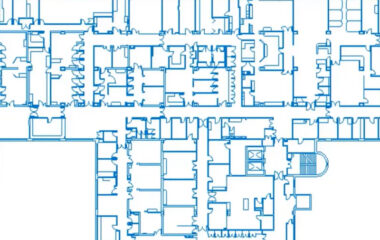Optimising energy management in education estates with estates management software, as featured in Campus Estate Management.
In 2021, a Times Higher Education study found that a university’s sustainability policy and work are more important than its location for mobile students. Another study by the National Union of Students found that over 60 per cent of students want to learn more about sustainability at university, and 87 per cent said that their university should take sustainability more seriously.
These statistics demonstrate how today’s student cohort values environmentally friendly work, especially within their university choices. More and more students are deciding where they want to study based on a university’s sustainability credentials, which includes their potential campus estate.
Attracting students to your campus is no longer about just the course credentials. Generation Z is firm in its stance towards the environment and it will continue to impact its decision-making, including. Ensuring the space in which they conduct their studies is in alignment with their sustainability morals is just as important and may require campus estate managers to reassess how their spaces are run.
Building Management System: Your New Friend
Even though the days of Excel spreadsheets acting as the backbone for an estate manager should be over, some still rely on this outdated system. A building management system (BMS) is the key to centralising all aspects of your campus into one succinct system through automation; it monitors and controls electrical equipment such as ventilation, lighting, energy, fire systems, and security systems used within buildings. Using computer-aided facilities management (CAFM) systems in tow with your BMS can provide detailed insight into energy usage across the campus and help you identify solutions to reduce it.
A CAFM system, which centralises the management of planned and reactive task can unlock substantial time and cost benefits relating to asset and maintenance management through streamlining workloads and supporting data-driven decisions. This software can monitor energy usage across various buildings, providing a detailed picture of several areas where inefficiency can be tackled.
It is by addressing several small changes across the buildings that combine to create a substantial impact on your energy usage and innovate new ways to operate. A BMS is a powerful tool and is crucial to identifying and minimising energy consumption; when integrated with CAFM software, the cost efficiencies and sustainability gains can be significant.
Sensors for Space Management
One way to further identify high energy usage across your campus is with the usage of sensor technology.
Sensors are a fantastic tool due to their versatility in data collection. They can be used to identify the temperature in certain rooms, the air quality inside a building, or even the natural light coverage within that space. All these aspects can be measured and used to grant an understanding of how much or little energy is being used to support these factors. When integrated with CAFM or space management software, they provide real-time insightful data to enable informed decisions about maintenance regimes and utilities consumption.
For example, for a sensor that is measuring temperature in a space, your findings might indicate that the heating is being left on in certain classrooms for too long. If you combine this with sensor data about room footfall, you can identify the time gaps between when a space is typically unoccupied, and when the heating is still on. The sensor data can also be used to predict future occupancy trends and react accordingly, giving you an accurate map of the space’s usage across a 24-hour period. These findings help the estates team to make better decisions around energy usage, and free up time to focus on more pressing issues that may be causing a greater impact on students.
These sensors are the key to identifying the small inefficiencies that may litter a campus estate. Once found, amendments to internal systems can be made; for example, turning the heating off two hours earlier because a room is not in use.
Energy Efficiency
When you see where and when energy is being used, you can determine where there are opportunities to be more efficient. A BMS can help with:
- Cost savings
- Controlling the building’s energy consumption
- Adapting energy usage
- Reducing asset downtime
- Improving well-being and productivity
- Meeting corporate social responsibility objectives
The requirements of a building’s facilities are long and sometimes tricky to adhere to, but by introducing a BMS, and integrating that BMS tool with CAFM software, these requirements will become easier to manage.
Asset Management and its Benefits
The centralised information then allows estate managers to track and manage assets across their whole lifecycle. This reduces asset downtime, improves performance, extends equipment life, and lowers maintenance costs, which supports sustainability objectives.
Planned preventative maintenance (PPM) schedules for assets are key to a successful and sustainable campus and effective asset management. The cost, both financially and ecologically, of non-functioning assets, and the subsequent maintenance callouts required to get them back up and running, is usually large.
If a heater has missed a PPM visit during the summer because it is deemed unessential, which then leads to a breakdown during the peak winter months, it impacts many people. It also indicates the use of temporary heaters will be required, which typically demand more energy due to their inability to fully heat large spaces, further impacting the sustainability credentials of the organisation.
Asset management, therefore, aids the energy management of campus estates because of its role in keeping assets efficient for as long as possible.
BIM Integration
Building Information Modelling (BIM) is compulsory for public sector new builds in the UK, meaning that any new campus buildings that are constructed require this system. It ensures that project and asset information, documentation and data are digitally available to each part of the supply chain, from architects to facilities and maintenance teams.
Via laser scanning technology, BIM can also be integrated into pre-existing buildings and works alongside existing FM data to eliminate duplications, creating one true version of the building information. It helps provide real-time updates and improves the quality and accuracy of asset information.
By introducing a BIM data, campus estate managers can guarantee that information about their building and its assets are up to date. It also facilitates their energy management goals and helps with keeping up with building legislation changes. Having high-quality data on the building’s assets and internal workings aids the PPM schedules, further assisting their efficiency and ability to detect problems before they occur. BMS and CAFM software are essential tools for any campus estate manager in running a secure, safe site. Ensuring to use this effectively to reach energy management targets is the new goal.
Case Study – Cardiff University
SWG worked with Cardiff University to implement a comprehensive facilities management software solution to manage reactive and planned maintenance, supporting a team of in-house and external contractors. Since the early 1990s, Cardiff University had used a CAFM system to manage all facilities and maintenance activity. By 2009, the system had become outmoded and was failing to deliver the operational benefits require by the estate’s team.
SWG’s QFM CAFM software was installed, and following a phased implementation, Cardiff University saw great benefits to its facilities management and energy management as a result. The system was able to prioritise and manage reactive maintenance calls, assigning them to the most relevant and available contractor at the time through the integrated mobile app. Contractors can access the details of the specific job and notify completion to the main office whilst on the job, reducing administrative load, downtime, and energy consumption.
The system was also used in conjunction with PPM schedules. The system was able to adapt to the working practices of Cardiff University, meaning it can produce extremely accurate statistics regarding how long it has taken to complete a job and use this information to drive key performance indicators for the site specifically. It also ensures a fast and efficient communication thread, meaning all relevant staff can be kept informed about a maintenance job and can therefore pass on relevant information to students who may be affected.
 UK
UK






